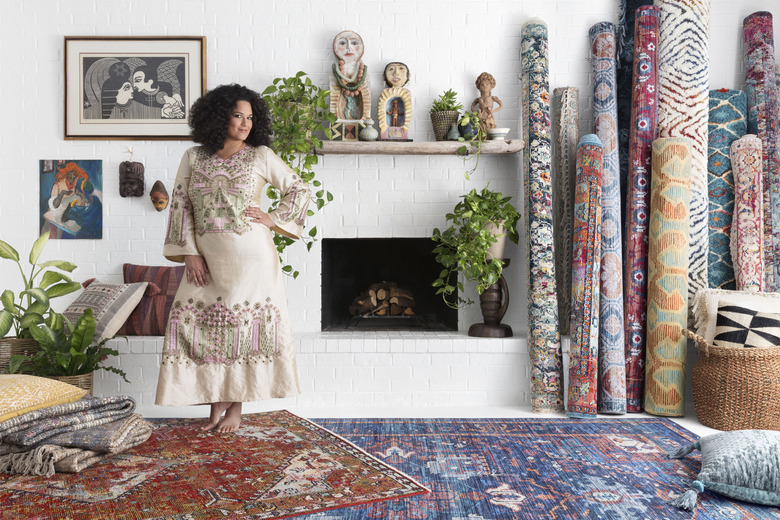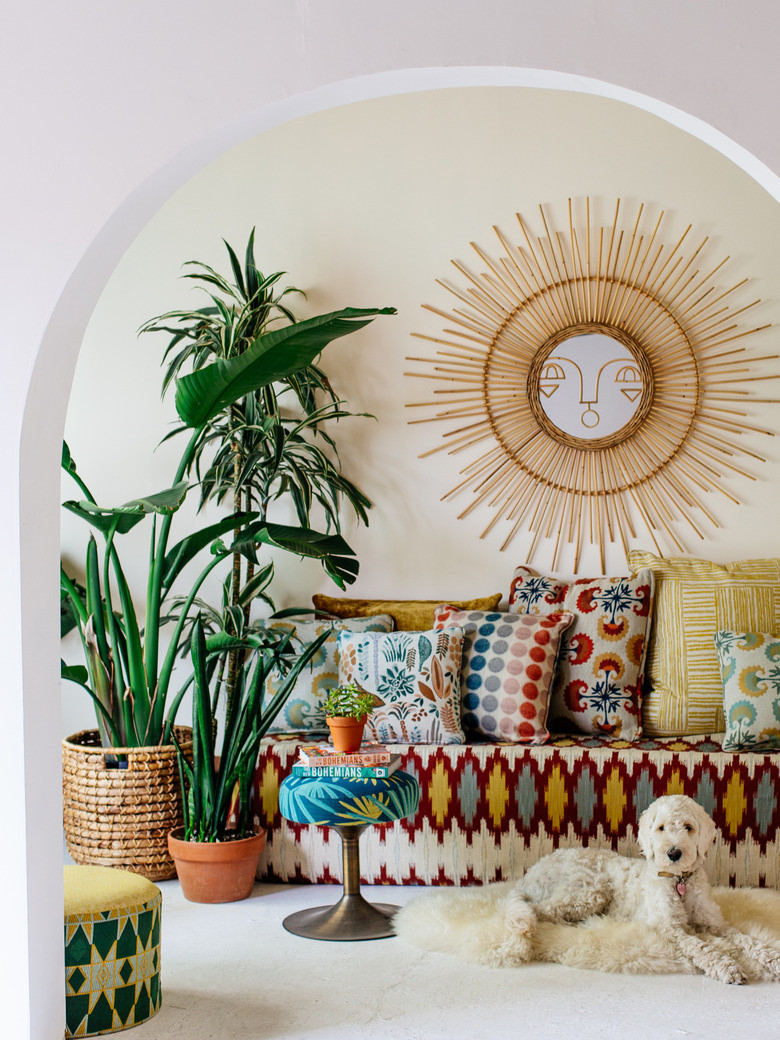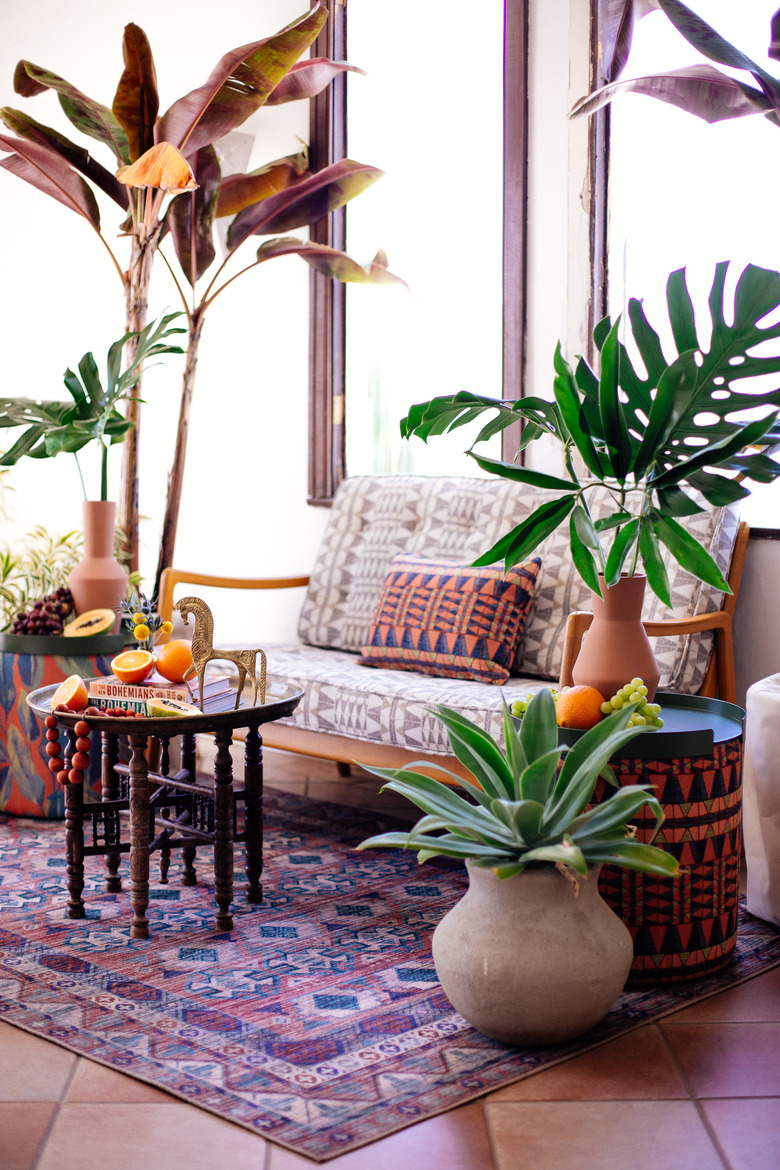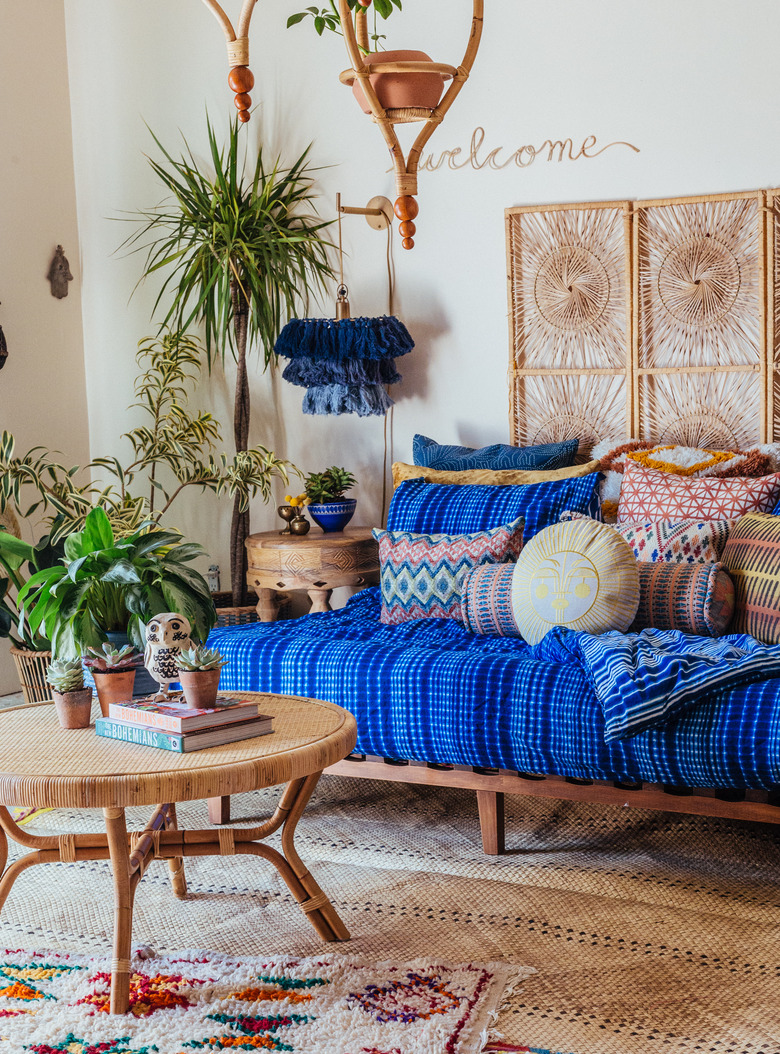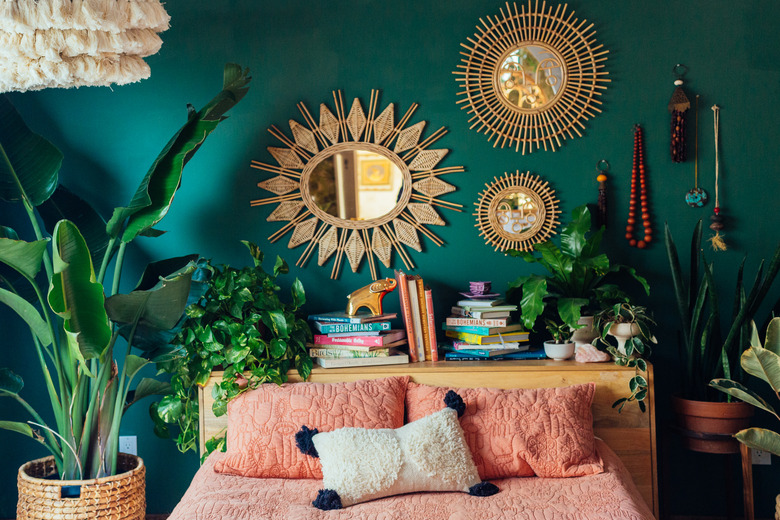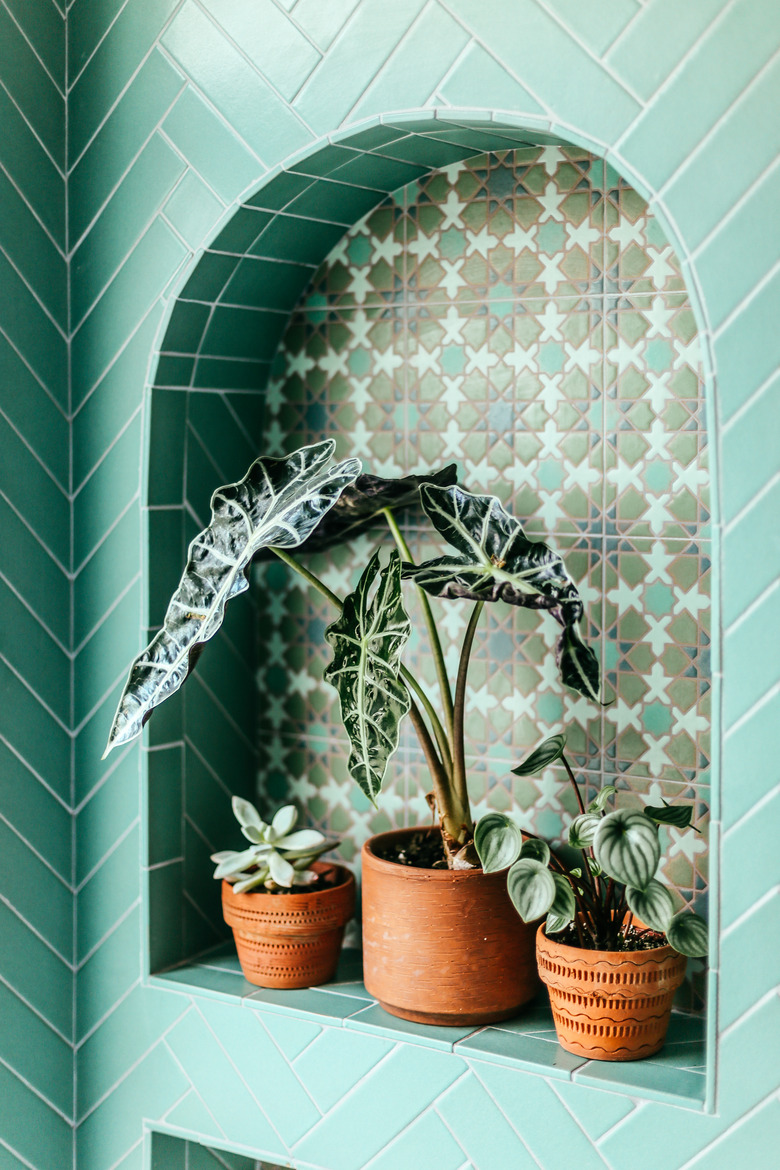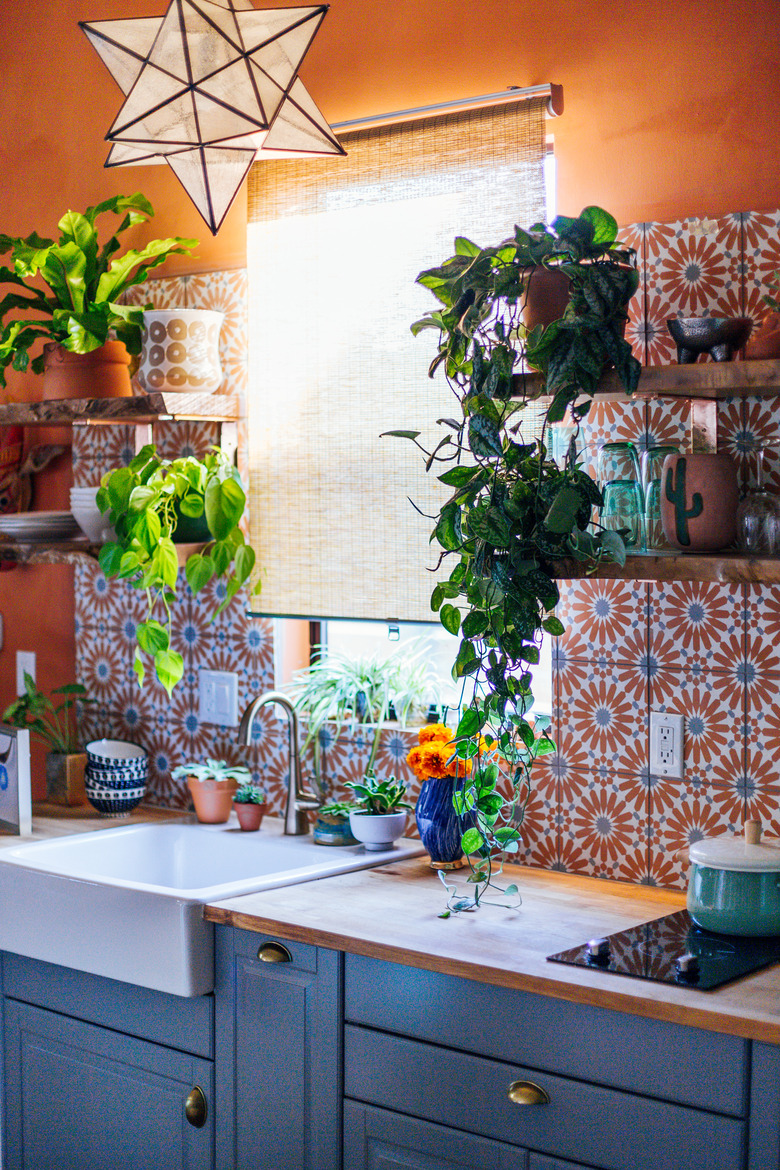What Is Jungalow? Interior Designer Justina Blakeney On The New Bohemian Era
L.A.-based designer Justina Blakeney is the reason you're seeing botanical wallpaper, pattern on pattern on pattern, the return of rattan and tropical decor, and plants everywhere. Her blog and lifestyle brand, The Jungalow, is far from the minimalist, all-white interiors that often fill our Instagram feeds — and people are fully embracing it. In fact, in recent years we've seen a new crop of young, design-minded folks using her brand as an adjective — describing their own style as "Jungalow minimalist" or "contemporary urban Jungalow."
But what exactly is Jungalow?
We talked with Blakeney about the core tenets of Jungalow and how she is inspiring a whole new Bohemian era in interior design.
Hunker: I've seen a few different three-word descriptions of Jungalow. It's color, pattern, and plants. It's wild, but cozy and homey. It's vintage, organic, handmade. Can you talk a little bit about what Jungalow means to you, right now?
Justina Blakeney: Of course, over the past 10 years, as I've defined my style in a public way, my style has evolved and taken on different facets. Color, pattern, and plants are at the core of what it is that defines my style. There are also other elements, though, making their way to the forefront.
One big thing right now is a global influence — how architecture and print and pattern and artifacts from different cultures come together, and the communication that happens between those objects. How do they speak to each other in the home? I think design in general is really about that conversation.
What are some of the trends you're seeing that feel right for The Jungalow?
JB: Right now, the trends I'm seeing for the coming years are really focusing in on natural materials in their most raw state. We're seeing so much terra-cotta, so much rattan, and these are the kinds of materials that really don't need very much human manipulation to become objects or furniture in the home. There's something really exciting about it. It's very soothing and it goes with that bringing-the-outdoors-in vibe that I am known for.
Is it kind of a back to basics thing?
JB: Kind of. There's an appreciation of the natural beauty of the world on the one hand. And on the other, I'm seeing the juxtaposition of the very, very man-made with the very, very natural — like holographs and Lucite and an '80s rainbow color palette, juxtaposed with ancient plasters and ancient forms and nods to ancient Egypt and Mesopotamia.
Very yes and...
JB: Right. I think that for so long in the early 2000s, it was just minimal, modern, minimal, modern. When I wrote The New Bohemians, my editor wanted to do a minimal bohemian chapter. And I said, I don't want to do that — minimal bohemian is watered-down bohemian at its core.
After seeing so much minimalism in the early 2000s, I really think people were, not so much rejecting but redefining it. There's a lot more beauty, more natural forms, warmth.
The jungle part of Jungalow is easy to see, but it's also about the bungalow — a smaller, cozier space.
JB: In essence, the name came out of my very first apartment. I lived in this little row of bungalows. That was 12 years ago. I moved in and I had botanical wallpaper and tons of plants, that's where the name came from originally.
For me, creating a home isn't about wealth, it's about creativity and being able to tap into your own personal taste and your own vibe. It's the home that lights you up and supports you and your family and your dreams and how you want to be. The bungalow — I like how the word feels in my mouth when I say it — it's representative of yes, a little home, but really a little place that's just for you. It doesn't have to be grandiose or outlandish. It's your little cozy spot. It is about creating that, in a way that speaks to you. I like the idea of a little bungalow, it gives you a sense of a small space that you can do what you will with it.
Has Jungalow changed at all for you in the 10 years that you've been building the brand.
JB: I'm always trying to push the envelope as far as what it means to decorate with plants — that's always been a part of my style.
I think of plants in the home as sort of similar to the way that people think about pets — they're part of the family and they're part of what makes the home alive and warm. The ways that people are introducing plants into the home is growing and changing, but the core essence of what it's about, has remained the same. The greenery, the living, breathing energy awakens the home in a way that you can't any other way.
It's a symbiotic relationship, we're hungry for that today in this very digital age.
Do you have advice for those who want to bring the good vibes into a home that's been, maybe, a little more minimalist, stark, or cold?
JB: There are so many ways to do it. Some of the simplest things are through plants, obviously. But also, textiles. They've always been a big part of my style. And bringing things back from travels is easy, whether you're far away or close by. It's easy to change up, switching from a more modern rug to something that's vintage, something with great color or texture. Rugs and blankets, too. I love kantha blankets from India. There are so many ways to buy one new textile and cover your sofa or table or hang it on the wall.
Also, statement art. I'm seeing a lot of basket gallery walls and things that are sort of repurposed and hung on the wall as art. That's easy to change out. And it doesn't have to be expensive to make a big statement. I think its about introducing items that mean something to you and your family.
When people's home design is a little too manufactured in that sense, it never really gives you that big feeling of, Oh, that feels like you. It feels a little too plug and play. It's important to be able to hone in on what makes you who you are and be able to express that.
What is the anti-Jungalow? The opposite side of the spectrum?
JB: Environments that are sterile are anti-Jungalow. And I think that environments that are manufactured for a certain look without it being about the soul of the people who live in it. That's the antithesis of what I try to do.
What's the last thing that made you say, Oh, that's so me.
JB: In general, every time I walk into a nursery or botanical garden, I just feel all the vibes and textures and colors and warmth and quirkiness of all the plants. That, and traveling. Last year, I went to Morocco and got to see all the zellige tile, mosaic tiles being hand made. It's that soulful artisanal colorful vibe that makes me feel at home.
This interview has been edited for length and clarity.
